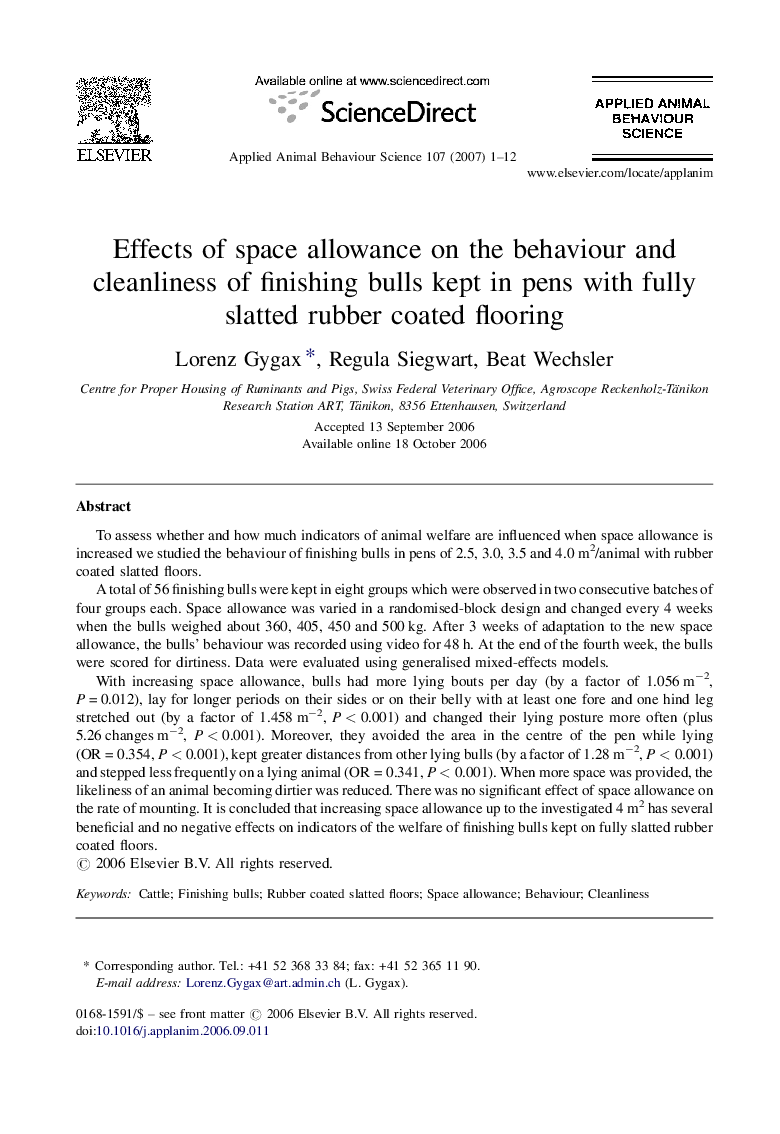| Article ID | Journal | Published Year | Pages | File Type |
|---|---|---|---|---|
| 4523929 | Applied Animal Behaviour Science | 2007 | 12 Pages |
To assess whether and how much indicators of animal welfare are influenced when space allowance is increased we studied the behaviour of finishing bulls in pens of 2.5, 3.0, 3.5 and 4.0 m2/animal with rubber coated slatted floors.A total of 56 finishing bulls were kept in eight groups which were observed in two consecutive batches of four groups each. Space allowance was varied in a randomised-block design and changed every 4 weeks when the bulls weighed about 360, 405, 450 and 500 kg. After 3 weeks of adaptation to the new space allowance, the bulls’ behaviour was recorded using video for 48 h. At the end of the fourth week, the bulls were scored for dirtiness. Data were evaluated using generalised mixed-effects models.With increasing space allowance, bulls had more lying bouts per day (by a factor of 1.056 m−2, P = 0.012), lay for longer periods on their sides or on their belly with at least one fore and one hind leg stretched out (by a factor of 1.458 m−2, P < 0.001) and changed their lying posture more often (plus 5.26 changes m−2, P < 0.001). Moreover, they avoided the area in the centre of the pen while lying (OR = 0.354, P < 0.001), kept greater distances from other lying bulls (by a factor of 1.28 m−2, P < 0.001) and stepped less frequently on a lying animal (OR = 0.341, P < 0.001). When more space was provided, the likeliness of an animal becoming dirtier was reduced. There was no significant effect of space allowance on the rate of mounting. It is concluded that increasing space allowance up to the investigated 4 m2 has several beneficial and no negative effects on indicators of the welfare of finishing bulls kept on fully slatted rubber coated floors.
